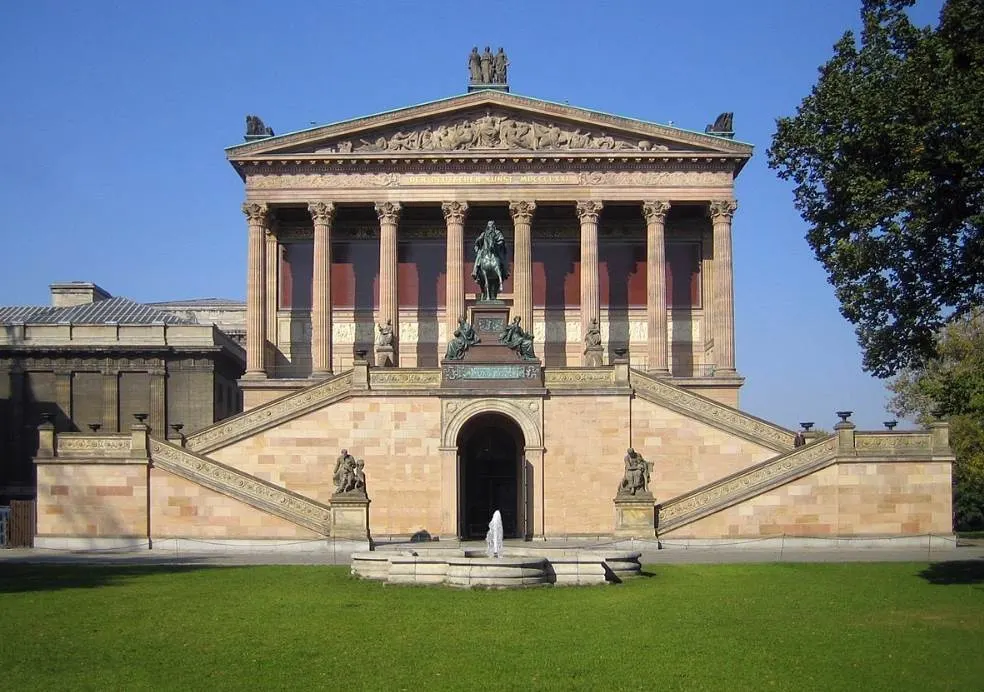One of the most influential French artists in history is credited with forming a bridge between Realism and Impressionism.
Regardless of the upper-class status of Édouard Manet (1832-1883), he often chose to depict Parisian life as it was in the 19th century.
This in combination with his distinctive style means that he produced some of the greatest masterworks of his generation.
In this article, you’ll discover some of the most interesting facts about In the Conservatory, a painting by Manet that has a remarkable story to tell.
1. It was painted during the 5 final years of the artist’s life
If I would have to make a top 5 list of the most influential artists in history, then Édouard Manet would be included in it.
That’s mainly because he can be described as the first modernist painter in history, and that’s a pretty big thing to be decorated with.
His family was very wealthy and had great political connections. He might as well have become a great Navy General, but he chose to sharpen his artistic skills and become a painter instead.
He started painting Realism paintings but this gradually changed to a more painterly technique that can easily be recognized.
He also produced several controversial paintings during the early phase of his career, including the world-famous works titled “Luncheon on the Grass” and Olympia.”

He painted In the Conservatory in 1879, less than 5 years after he passed away in 1883.

2. It depicts a couple inside a conservatory owned by Manet’s friend
This painting depicts a couple inside a greenhouse, also known as a conservatory. This explains the plants and flowers in the background.
The woman sits straight up on the bench while the man is leaning on its edge right next to her. It’s a remarkable composition, to say the least.
Because the man stands behind the bench, Manet was able to integrate several lines that define the overall composition.
This includes the straight position of the woman and the horizontal line of the bench which separates the foreground from the background.
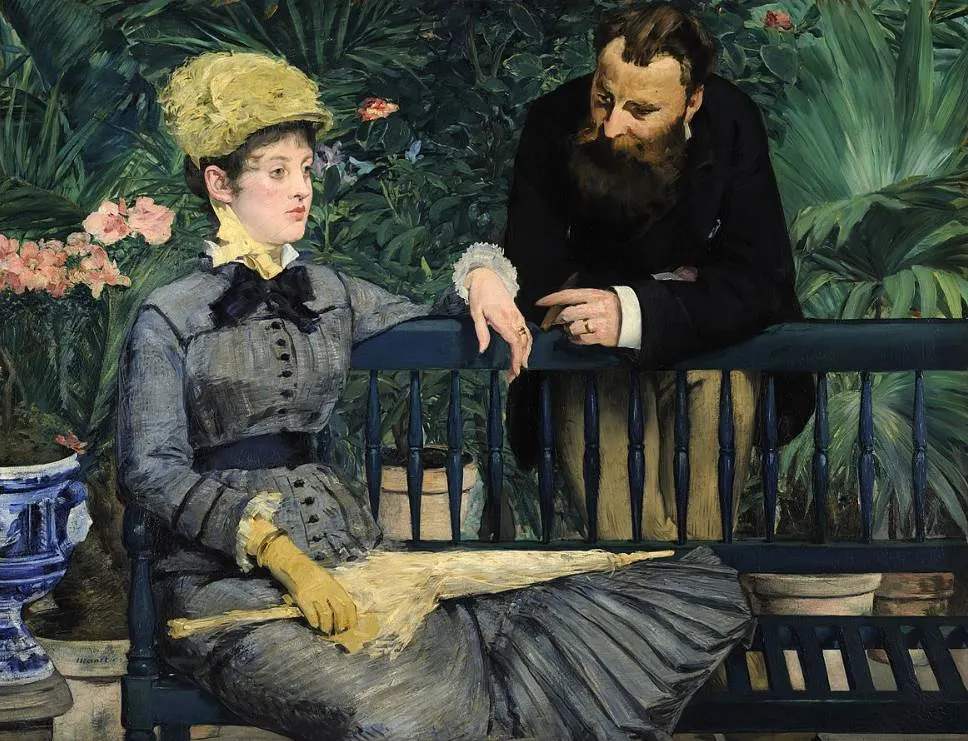
Equally remarkable is the fact that Manet used this conservatory as a studio. It was located at 70 Rue d’Amsterdam in the 9th arrondissement of Paris, just southwest of Montmartre.
This green area in the heart of Paris was a great place for couples to have an intimate rendezvous (a date) as they were secluded by the greenery inside.
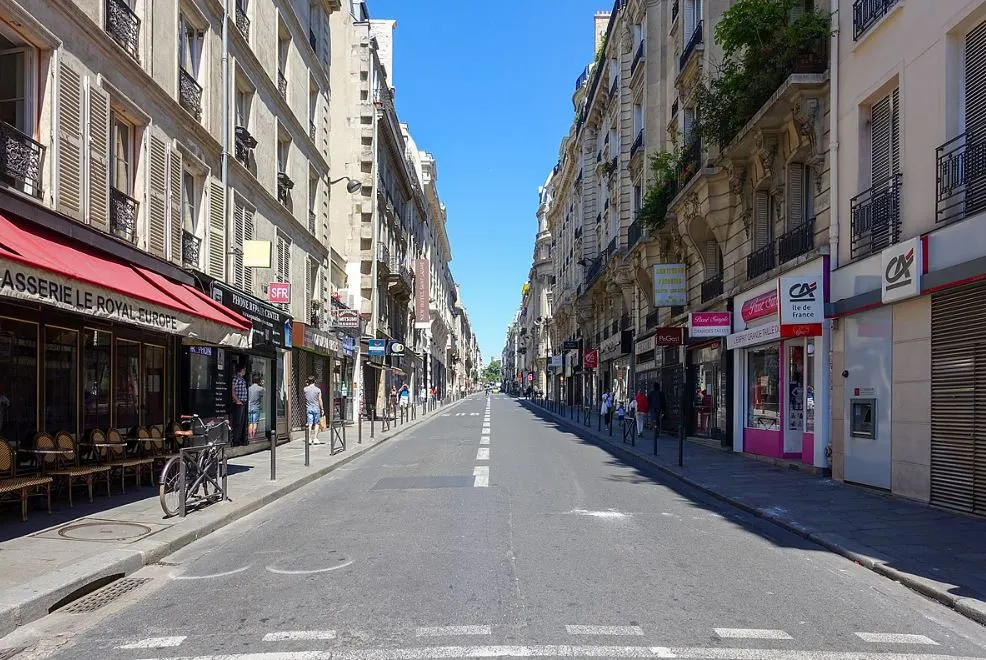
3. The man and woman were an upper-class married couple and Manet’s friends
The painting depicts a couple known as the Guillemets. Jules Guillemets and his wife owned a clothing store and could be considered an upper-middle-class couple in the 19th century.
This also explains the fashionable clothes they wear, especially the woman whose full name was Jeanne Julie Charlotte Besnier de la Pontonerie.
Madame Jules Guillemets was known for her elegance and commanding presence in social circles in Paris and this is definitely emphasized in this work.
The Guillemets were definitely close friends of the painter because Manet completed “Portrait de Madame Jules Guillemet” a year later in 1880.

4. The detached appearance of the couple has baffled art critics for decades
The look on the woman’s face looks a bit detached, but this is also the case in the portrait that Manert painted shortly after he completed In the Conservatory.
While this might not tell the complete story, the fact that the man doesn’t sit next to her probably does.
The rings on the couple’s fingers make it no secret that this is a married couple, and the only sense of intimacy is the fact that their hands are close to each other.
It remains one of Manet’s most mysterious paintings because the context in which it was painted isn’t clear.
Are they quarreling? Or are they simply absorbed by their surroundings? The truth remains out there and is still up for debate.
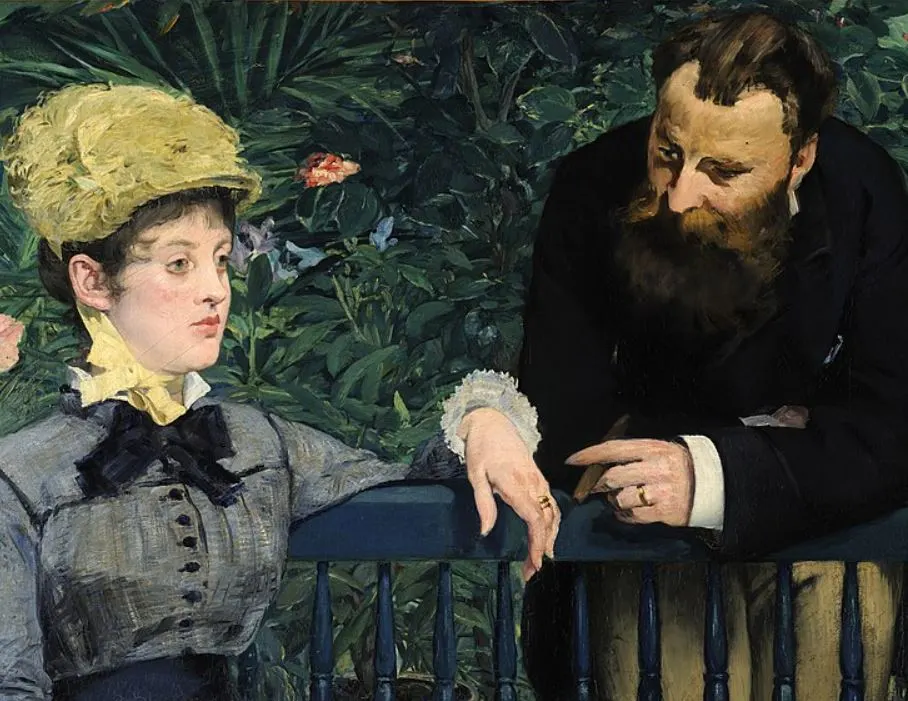
5. Manet painted a similar work the same year that contrasts the couple’s attitude
Édouard Manet painted several couples throughout his career, often while indulging in alcoholic beverages. Some meetings are cold and distant, while others aren’t.
A painting titled “At the Pere Lathuille Restaurant” (1879) provides a completely different vibe than that of In the Conservatory.
That’s mainly because the amorous couple interacts with each other. The Guillemets don’t and seem to be in deep contemplation.
This painting by Manet depicts a scene in a restaurant that was located in the Batignolle District in the northwest of Paris. The owner of the establishment curiously stares at the couple in the background.
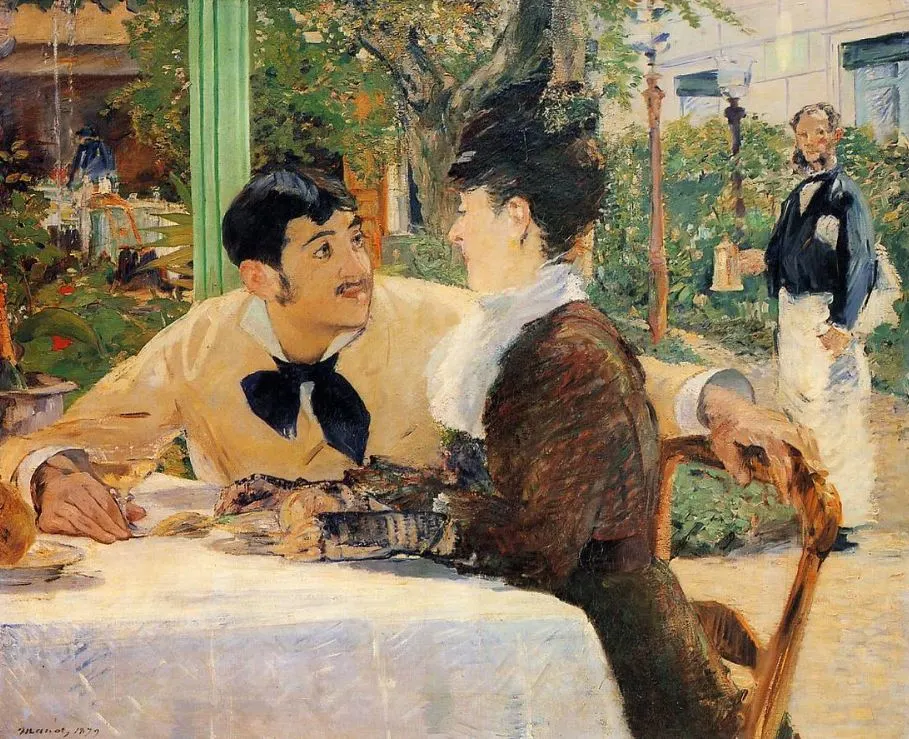
6. It was the first Manet painting purchased by a museum in 1896
The painting was owned by the French opera singer Jean-Baptiste Faure before it was purchased by the German Nationalgalerie in Berlin in 1896.
Because it was located in Berlin, it had to be moved to safety during World War II. In the Conservatory was one of many artworks that were stored in a German salt mine.
The American Monuments, Fine Arts, and Archives Program eventually found the painting and ensured it remained safe at the conclusion of the war in 1945.
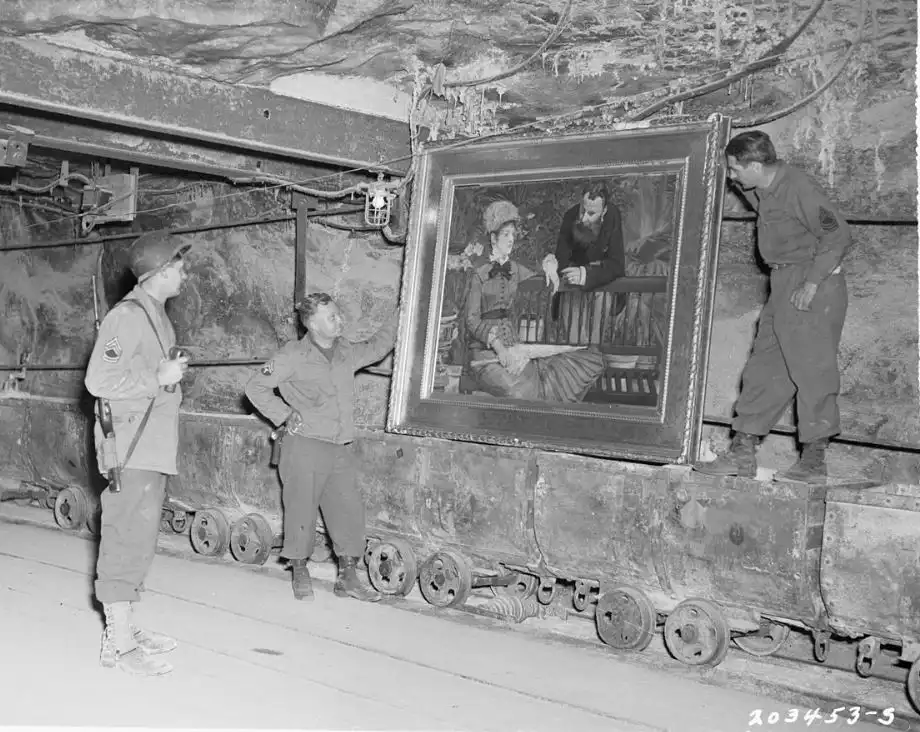
7. How big is In the Conservatory by Édouard Manet?
As you can see from the image of American soldiers admiring Manet’s masterpiece in the salt mine, this is far from being a small work of art.
In the Conservatory (1879) by Édouard Manet is a medium-sized oil on canvas painting that has dimensions of 115 × 150 centimeters (45.3 × 59.1 inches).
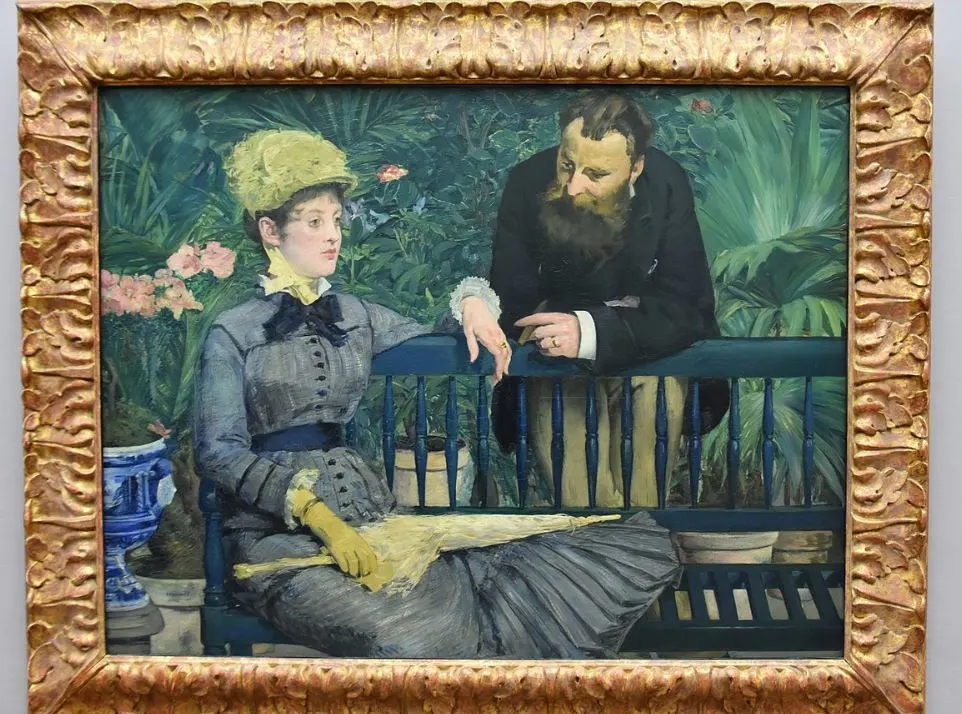
8. Where is Manet’s famous painting located today?
The painting became part of the German National Gallery and the Berlin State Museums in 1896 and it was simply returned here following its evacuation during World War II.
Today, Manet’s painting is part of the collection of the Alte Nationalgalerie which can be found at Museum Island in the heart of Berlin.
